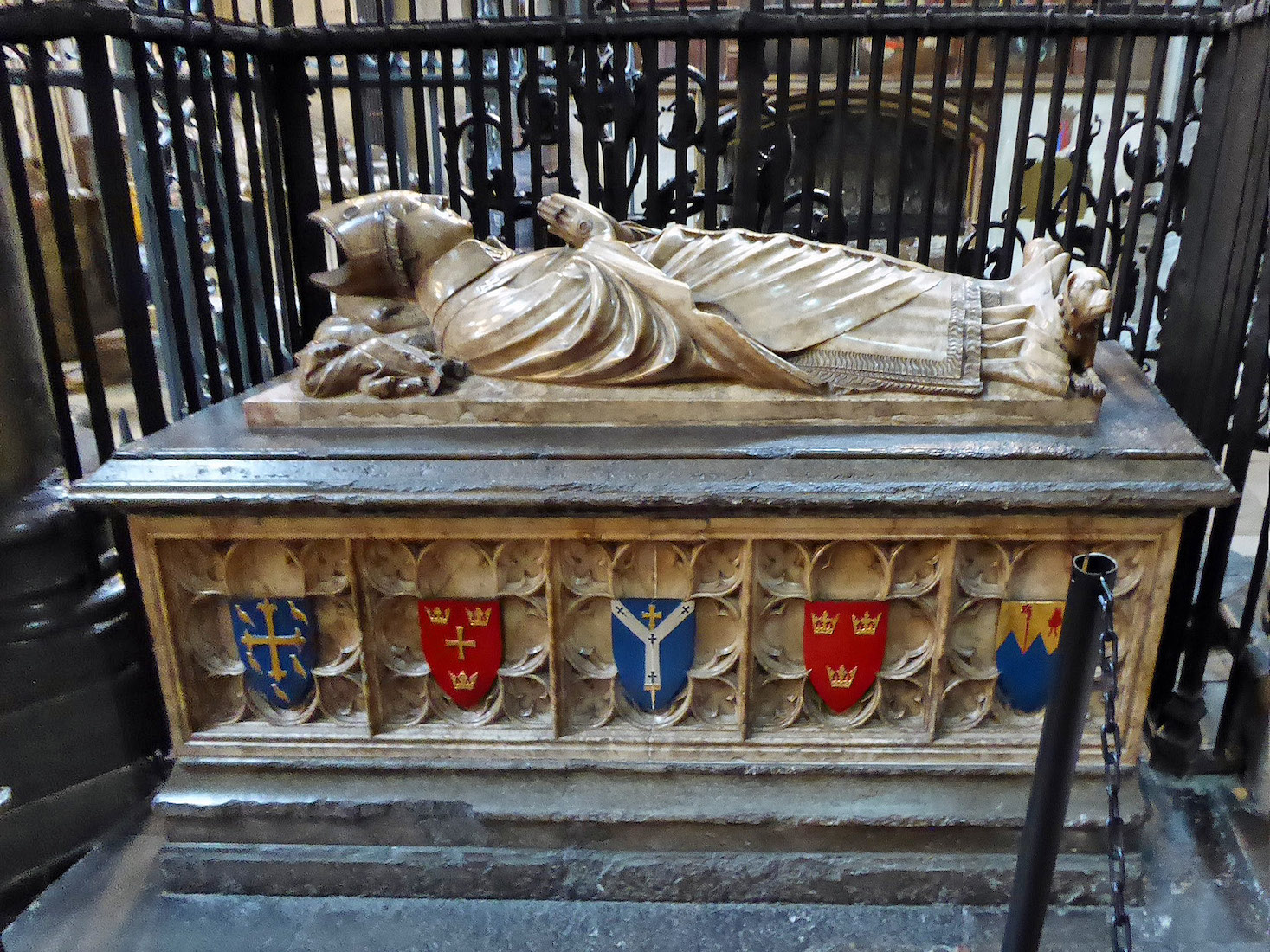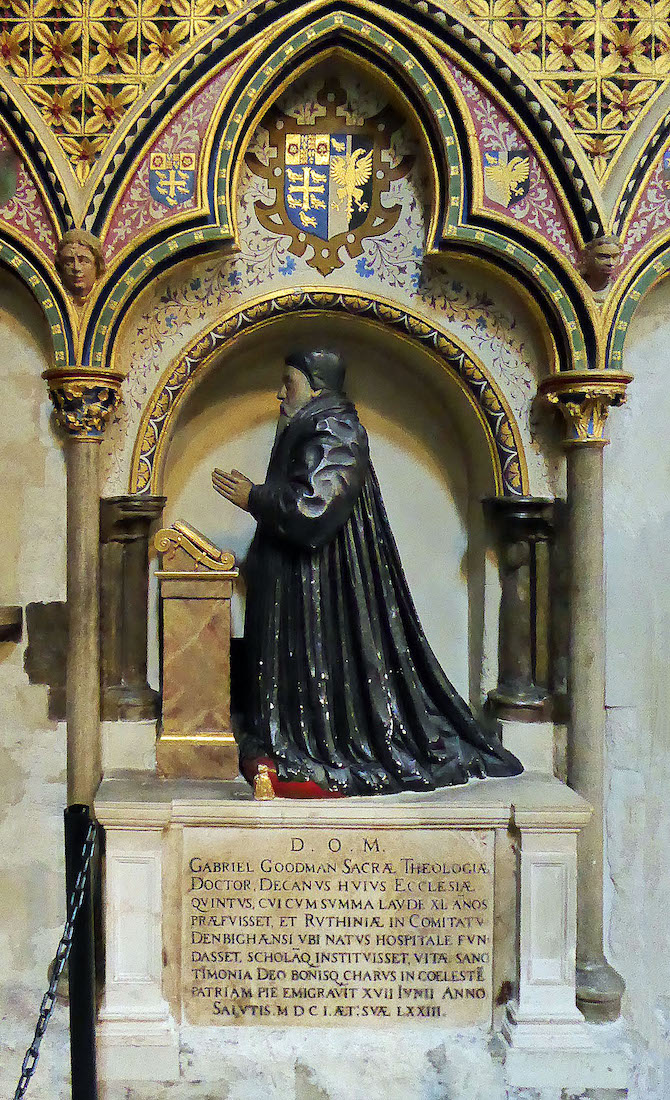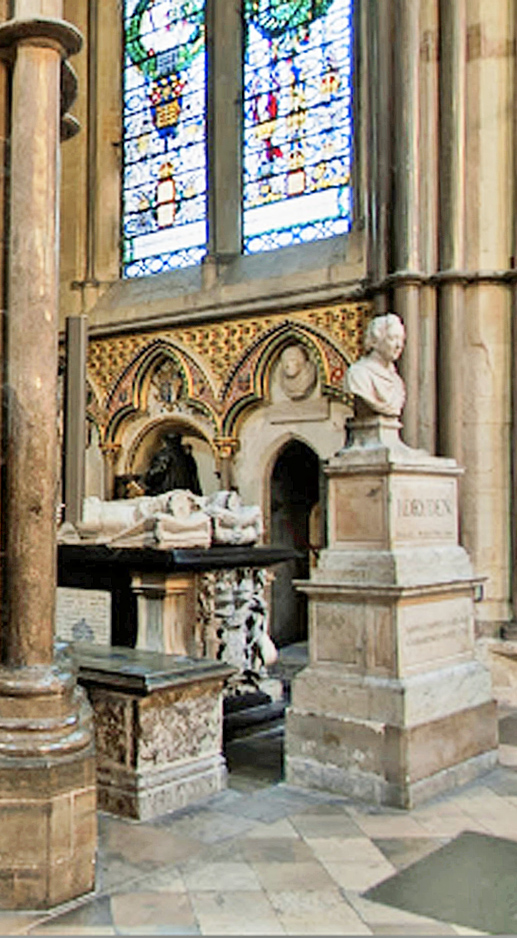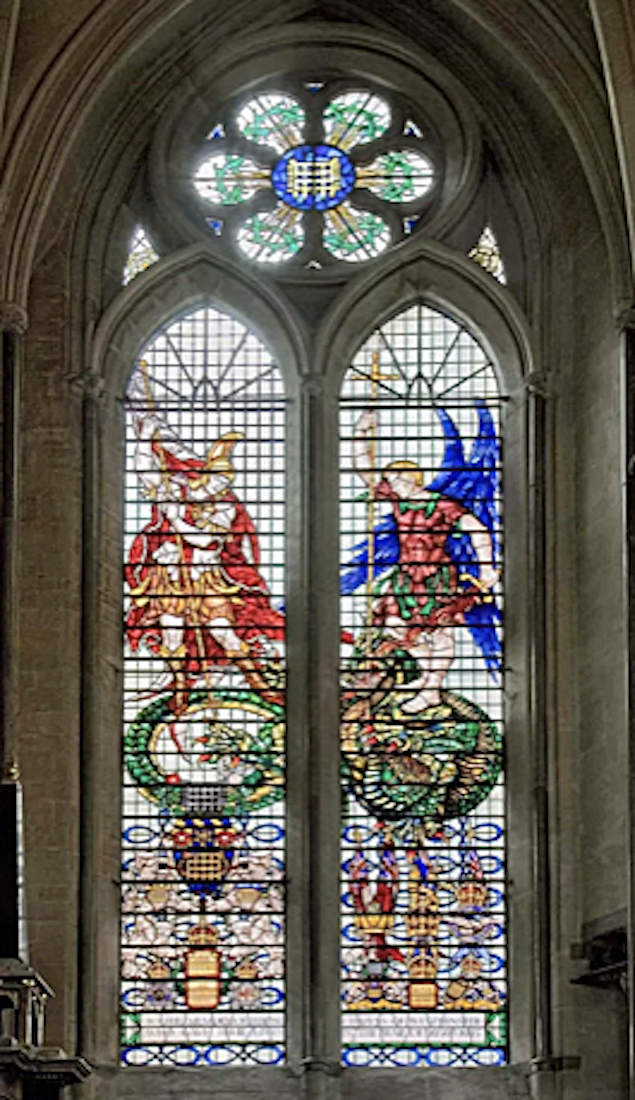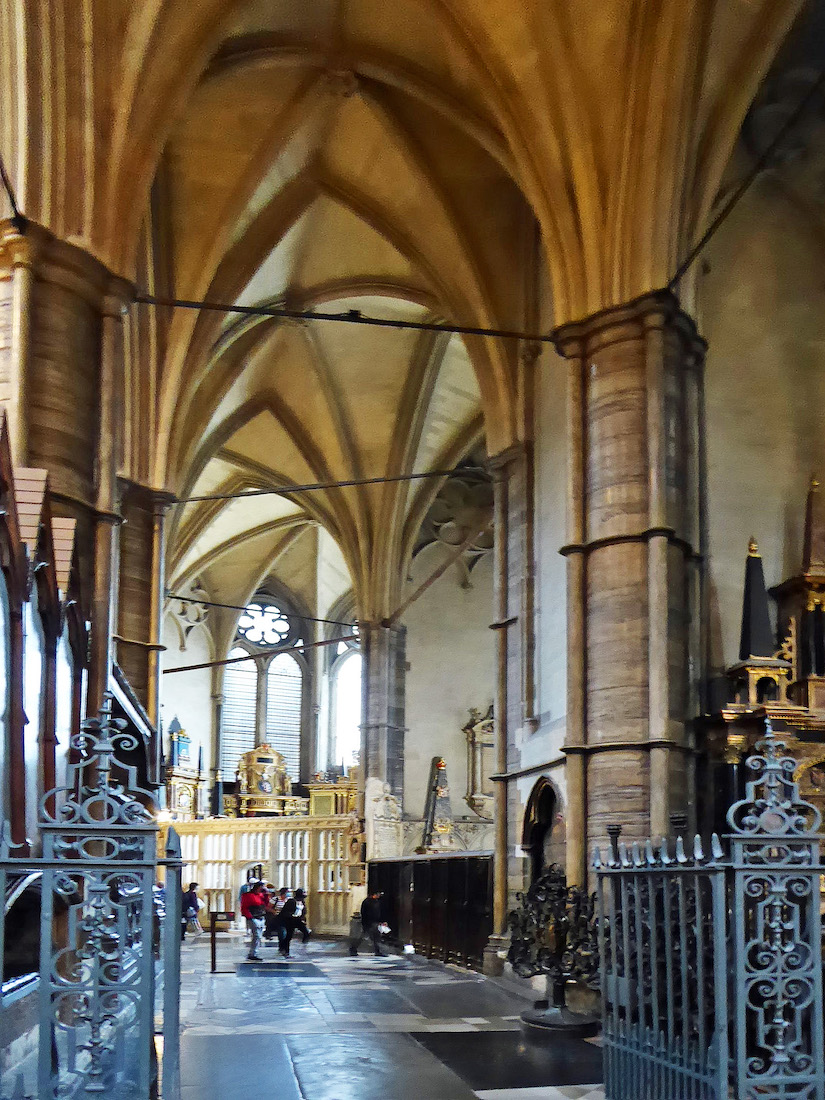F61. WILLIAM DE VALENCE TOMB AMT
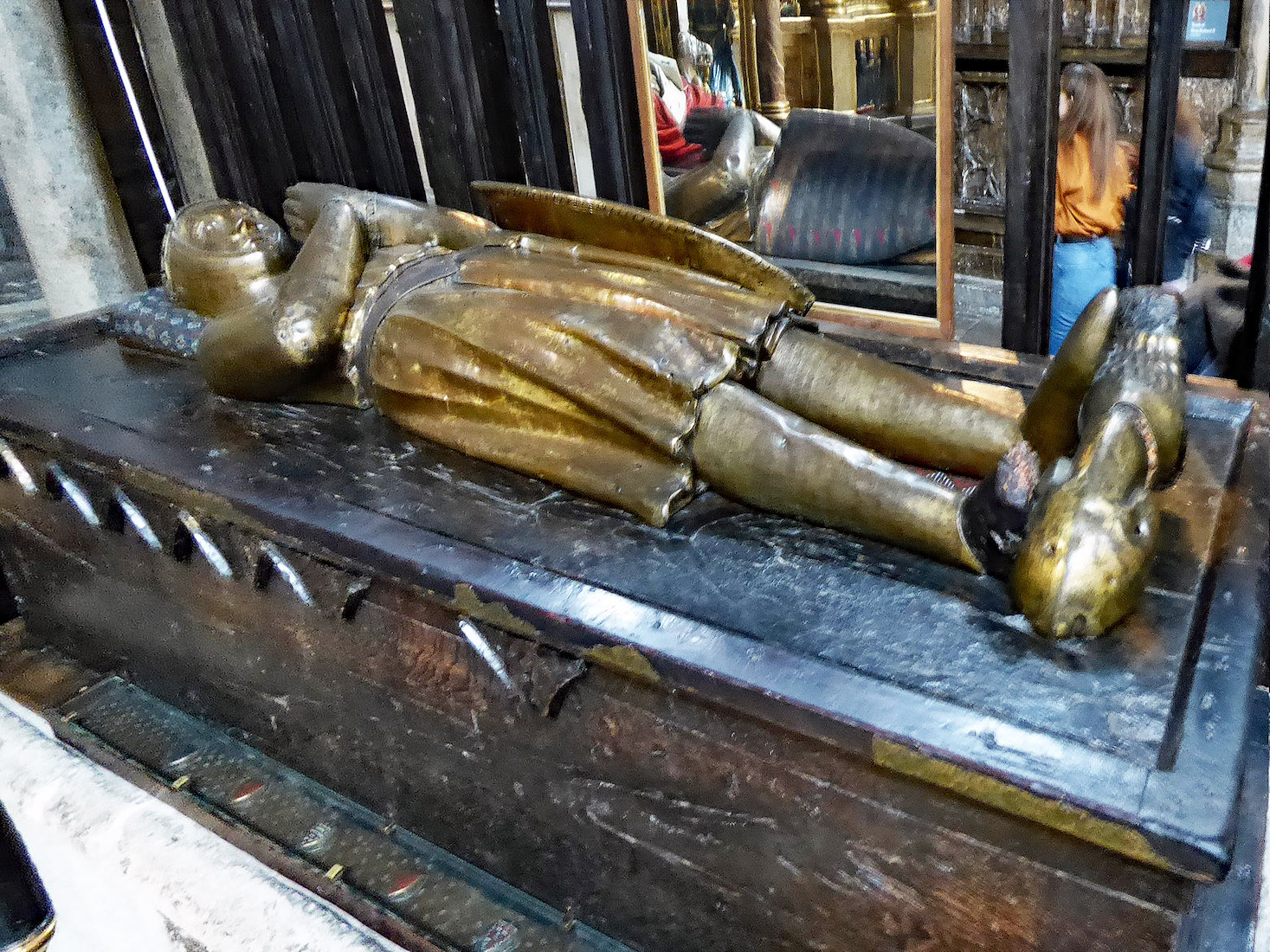
This is the final tomb in our circuit of St Edmund’s Chapel. William de Valence, Lord of Pembroke and Wexford was a half brother of Henry III. He went on Crusade with Prince Edward and brought back a jewelled cross which his daughter in law Mary later bequeathed to Westminster Abbey (it no longer remains). He died at his manor in Kent in 1296. We now leave St Edmund’s Chapel and proceed to the last of these six chapels – St Benedict’s Chapel. INDEX
F62. ST BENEDICT’S CHAPEL, CRANFIELD TOMB AMT
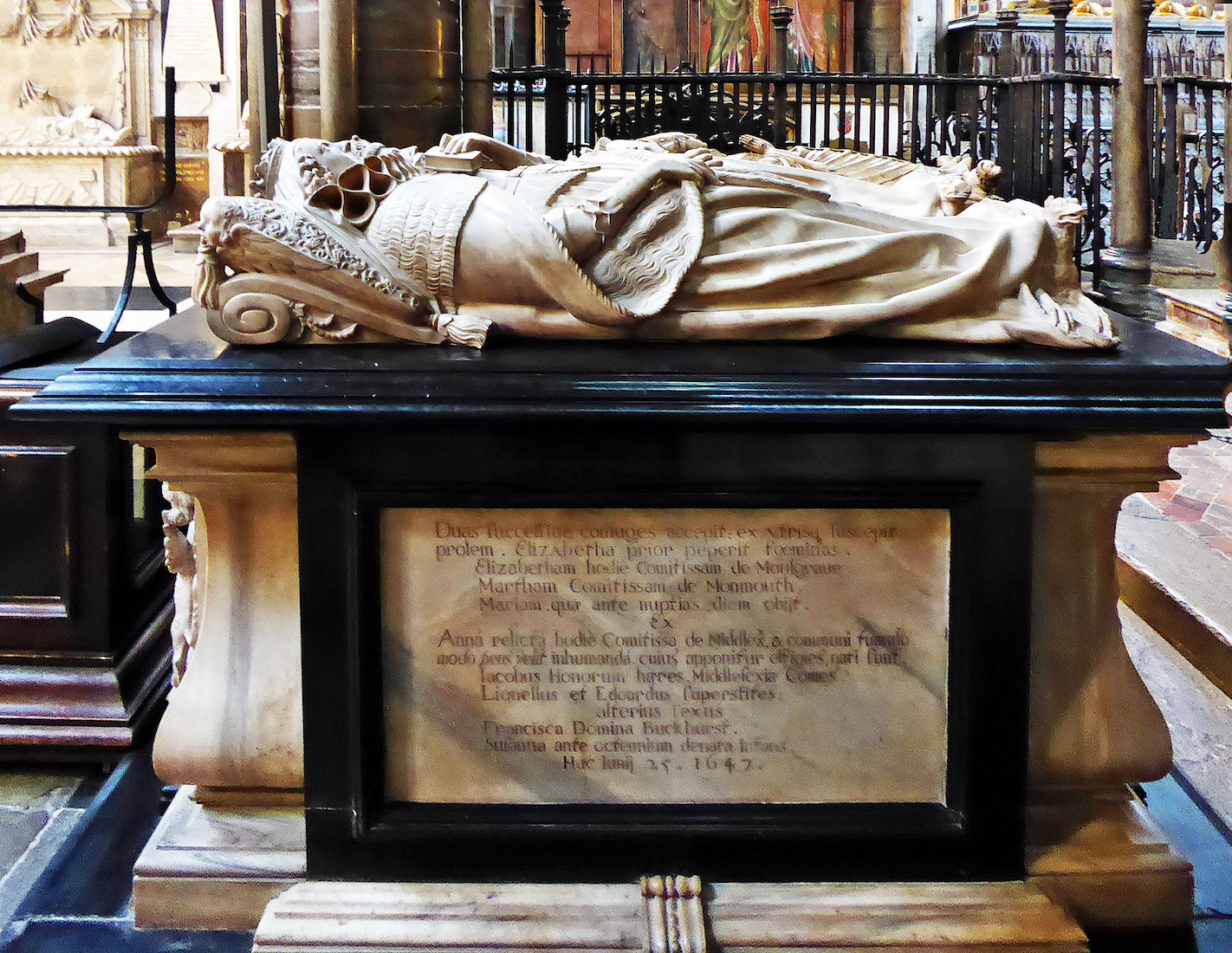
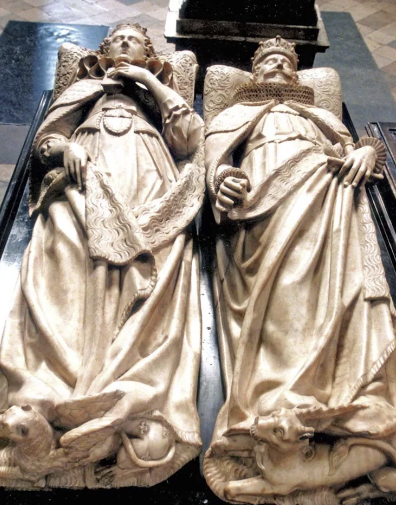
St Benedict’s Chapel is different from the other chapels. It is square in shape, and bounded by the South transept and the South ambulatory. On the other hand, it is separated from the ambulatory by a black see-through screen. It is open to the South transept, but as we saw earlier, a bust of John Dryden on a very large pedestal tends to block the view! A similarity to the previous chapels is the tombs and monuments surrounding the central space. •• At the West end (behind John Dryden) is a large tomb, with white marble effigies, to Lionel Cranfield, 1st Earl of Middlesex and his second wife Anne. Each effigy is dressed in robes with coronets. He holds a sword in his left hand and she holds a book. At the feet of the Earl is an antelope and at the foot of the Countess’s effigy is a griffin powdered with fleur de lis. Both their heads rest on cushions, that of the Countess having cherub-head tassels. The sculptor was Nicholas Stone.
F63. LANGHAM TOMB AMT
On the Northern side of the Chapel, against the railing is the tomb of Simon Langham, the only Abbot of Westminster to become a Cardinal. The inscription is in raised letters on a metal strip around the tomb slab with an engraved flower or monster between each word. The remaining Latin inscription can be translated: Here lies [Simon Langham] one time Abbot of this place, Treasurer of England, elected to the See of London, Bishop of Ely, Chancellor of England, Archbishop of Canterbury, Cardinal Priest, and afterwards Cardinal Bishop of Palestrina..’ The shields (repainted in the 1960s) show the coats of arms of the monastery of Westminster, the sees of Ely and Canterbury, Edward the Confessor, France and England and its variants as borne by Richard II and Edward III.
F64. HERTFORD MONUMENT AMT
This monument is at the East end of the Chapel. (The Cranfield monument is in the foreground.) The monument remembers Frances, Countess of Hertford, who was buried in St Benedict’s chapel. The large wall monument was executed by the Southwark School of tomb makers. It is about twenty eight feet high and mostly of alabaster, with Corinthian columns and a recumbent effigy of the Countess dressed in a red fur lined cloak with a lion at her feet.
F65. GOODMAN MONUMENT AND ANCHORITE DOOR AMT GSV
On the South wall is a monument to Gabriel Goodman, Dean of Westminster 1561 – 1601, who is buried there. It consists of a bearded figure in Doctor’s robes and cap kneeling in front of a prayer desk, on which is an open book. ••• Just to the right of the Goodman monument is an interesting door. The doorway with the bust of a monk (St Benedict?) above leads to a cell with four stone walls and a window on to St Benedict’s Chapel. It was occupied by the Abbey’s anchorite, who would retire there for a life of prayer and contemplation except for food deliveries and unusual occasions.
F66. ST BENEDICT CHAPEL WINDOW AMT
A stained glass window in St Benedict's Chapel was dedicated in 1923, but destroyed by bombing in 1940. The present stained glass window is in memory of those citizens of Westminster who gave their lives during the 1939-1945 war. The glass was designed by Hugh Easton and depicts large figures of St Michael, with a flaming sword, and St George slaying the dragon. The coat of arms of the City of Westminster and various badges and emblems representing the armed forces and other organisations, such as the Home Guard and Civil Defence, in which citizens served are also shown. Princess Margaret unveiled the window on 7th November 1948. The inscription reads: ‘To the memory of those citizens of Westminster who gave their lives in the war of 1939 – 45.’
F67. SOUTH AMBULATORY GATES AMT
This completes our exploration of the sanctuary and its surrounding chapels, so this view of the South ambulatory gates is an appropriate conclusion. However, it is also the beginning of a new adventure as we next enter here to make our way to the Lady Chapel.


